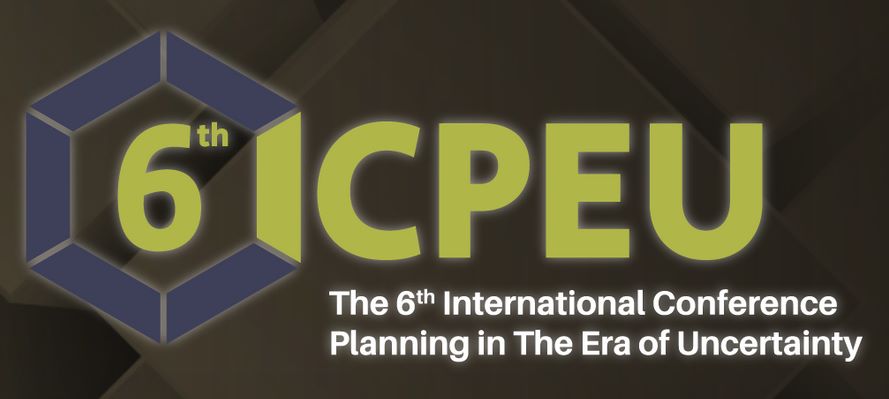Determining Infiltration Rate from Infiltration Measurement with Flooding Method by Turftech Infiltrometer
DOI:
https://doi.org/10.21776/ub.civense.2019.00201.4Keywords:
density soil, land slope, landuse, turftec infiltromete, urban landflowAbstract
The density of the soil in this study estimate parameters with a dry bulk density. variation of soil density based on urban land us and then grouped into heavy, medium, and high-density soil. the rate of infiltration testing is performed by using turftech infiltrometer. and then analyzed with an infiltation horton modification models. the specification of turftech double ring infiltrometer are 6.03 cm for inner ring diameter and 10.79 cm for outer ring diameter. the result of infiltration rate observations is infiltration rate for higher density soil and land slope had low influences. the results showed that the turftech ifiltrometer that is used produced well results with 87% accuracy compared with the horton equation infiltration rate model. for the measurement results feasibility, then the turftech infiltrometer unable to represent for the land slope and density, because from the regression test the relationship between land slope and density toward infiltration rate was not significant and obtained average of 38% from the obtained r2.
References
Bedient. (2008). Hydrology and Floodplain Analysis. Canada: Prentice Hall, Pearson Education International.
D.M, F. (1997). The Influence of Slope Angle on Final Infitration Rate for Interill Conditions. Geoderma, Elsevier, 181-194.
Ben-Zvi, A. (2013). Bypassing Determination Of Time Of Concentration. Journal Of Hydrologic Engineering, 1674-1683.
Beven*, K. (2004). Robert E. Horton’s Perceptual Model Of Infiltration Processes. Hydrological Processes, 3447–3460.
E.M, W. (1990). Engineering of Hydrology. UK: Maecillan Education UK.
Gavin, Kenneth, and Jianfeng Xue. 2008. “A Simple Method to Analyze Infiltration into Unsaturated Soil Slopes.” 35: 223–30.
Hjelmfelt, A. (1978). Influence Of Infiltration On Overland Flow . Journal Of Hydrology, 179-185.
Kenneth C. Ames, E. L. (2001). Preliminary Assessment of Infiltration Rates and Effects on Water Quality of Selected Infiltration Media for Use in Highway Runoff Retention Basins in Washington State. Olympia, Washington: Washington State Department of Transportation Research Office.
Lipiec. (2006). Soil Porosity And Water Infiltration As Influenced By Tillage. Soil and Tillage Research.
Li, Ming-han, and Paramjit Chibber. 2008. “Overland Flow Time of Concentration.” (2060): 133–40.
Noorvy, D. (2014). Effect Of Density Soil To Water Recharge (Infiltration) In Urban Overland Flow. International Confference On Suistanable Built Environment. (pp. (Pp. 87-94).). Yogyakarta: : Universitas Islam Indonesia.
Maximilian, John et al. 2011. “Coupled Simulation of Surface Runoff and Soil Water Flow Using Multi-Objective Parameter Estimation.” 403: 141–56.
RonG-HeR CHEN(*), k. J.-m. (2011). Experiment On The Stability Of Granular Soil Slopes By Rainfall Infiltration. Italian Journal of Engineering Geology and Environment , 301-311.
Downloads
Published
How to Cite
Issue
Section
License
Copyright (c) 2019 Civil and Environmental Science Journal

This work is licensed under a Creative Commons Attribution-NonCommercial 4.0 International License.
Authors who publish with this journal agree to the following terms:
Authors retain copyright and grant the journal right of first publication with the work simultaneously licensed under a Attribution-NonCommercial 4.0 International License that allows others to share the work with an acknowledgement of the work's authorship and initial publication in this journal.
Authors are able to enter into separate, additional contractual arrangements for the non-exclusive distribution of the journal's published version of the work (e.g., post it to an institutional repository or publish it in a book), with an acknowledgement of its initial publication in this journal.
Authors are permitted and encouraged to post their work online (e.g., in institutional repositories or on their website) prior to and during the submission process, as it can lead to productive exchanges, as well as earlier and greater citation of published work (See the Effect of Open Access).














